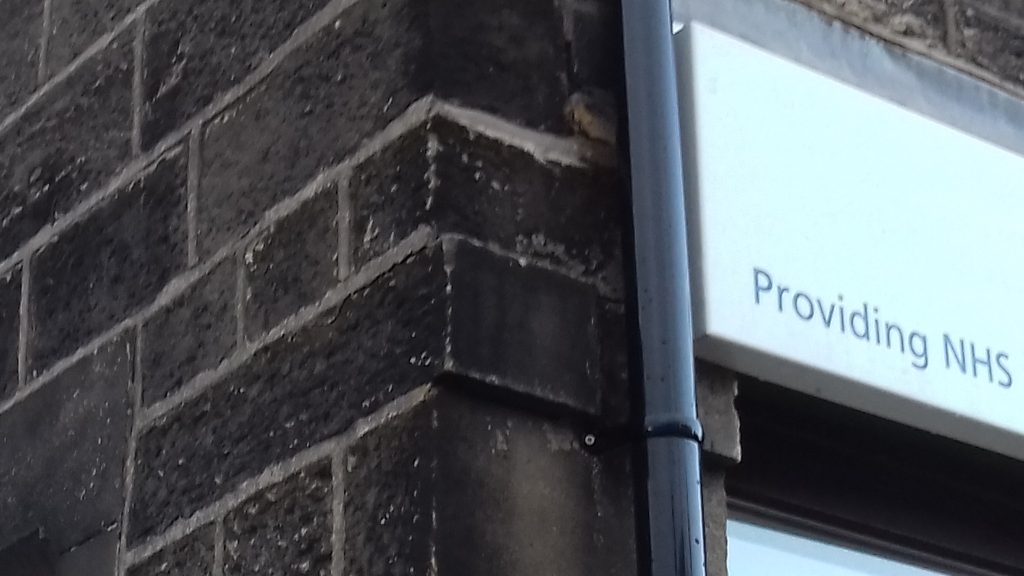We were off to Keighley, Bradford for another mould survey. A two-storey, end terrace town building with traditional stone external walls was suffering from damp and mould contamination is several areas.
The building was made up of several clean rooms, equipment storage rooms, a small but welcoming reception, toilets, and a staff room. The building was (suffering from) long-term damp problem in the reception, and the first-floor office. There were no obvious signs of mould contamination in the building but the damp has been causing a lot of damage to wall and furnishings. Fortunately, none of the people working in the building have been poorly because of exposure to mould spores. Absence of visible mould contamination in the building does not necessarily mean that the building is mould free. If damp is present for long periods of time than it is very likely that mould will be present as well, perhaps in the cavity walls, floor voids or above false ceilings.

The office on the first floor had obvious signs of damp problems; the top corner of the wall, close to the chimney breast on ceiling. The inspection of the outside of the building confirmed that the chimney cowl were missing allowing water into to the chimney. Old chimney are very frequently affected by water penetration and especially in old building are a cause of many mould related problems. Several decades ago when the chimney were in frequent use the water penetration was never a problem. Any water falling into the chimney would be promptly dried out by the heat of the fire. In modern days the fireplaces have fallen into disuse and are not used any more. This has open a new route for water to get into the house. In addition to the open chimney the roof tiles around the chimney have become separated allowing rain water the push through into the loft space. The loft is in good condition with no fungal contamination, however there were some signs of water on drops on the loft plaster.

The ground floor reception area shows evidence of penetrating damp in the corner of the external wall. The moisture reading suggested that the water was penetration the building envelope in the upper corner of the wall. When we inspected the building from the outside we noticed a missing pointing between the stones. This gap between the stones was the most likely place where the water enter the building. Fortunately, the wall on the inside was not affected by mould.
The basement of the property was most severely affected by damp. The walls finishes were badly damaged with all the protective paint peeling off an dropping to the floor. The basement is situated below the level of the surrounded ground constructed of brick walls covered with lime plaster. The plaster was nor repaired for several decades and was in serious state of disrepair. Despite the high humidity and high levels of moisture there was no mould present to any of the wall, most likely due to high alkalinity of the traditional lime plaster preventing development of moulds.

We have carried out moulds sampling and air quality testing in the building and confirmed that the staff was not being exposed to mould spores. Nevertheless, the building needs some remedial work to prevent the damage to internal walls, roof repairs, new chimney cowls and re-plastering of the cellar.
